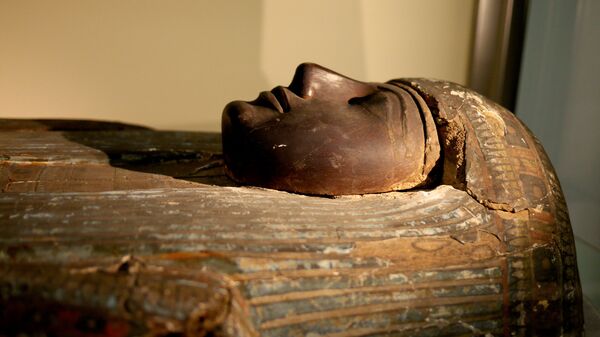Egyptian archaeologists have recently announced the discovery of an ancient burial site containing 50 mummies, 12 of which are reportedly children.
The mummies — discovered inside four, nine-meter-deep burial chambers in the Tuna El-Gebel archeological site east of Mallawi — date back to the Ptolemaic, early Roman or Byzantine period.
"The grave that we are talking about here has a well that is almost nine meters deep, leading to four chambers underground holding a great number of mummies — over 50 mummies. Around 40 mummies are currently being exhibited, 12 of which are […] children," the secretary general of the Supreme Council of Antiquities, Mostafa Waziri, said Saturday, according to PressTV.
Waziri explained that the remains cannot be currently identified as no names were found in the vicinity of the dig.
New #discovery in #TunaelGebel #family #grave of more than 40 #mummies #menia #Egypt #Egyptology #ambassadors from 11 #countries attended as well as #international #media #mummies pic.twitter.com/7VnBHdMYfI
— Ministry of Antiquities-Arab Republic of Egypt (@AntiquitiesOf) 2 февраля 2019 г.
"But it is completely obvious from the method of mummification that these mummies did, to some degree, hold prestigious jobs, important jobs," Waziri explained.
#Mummies #menia #Discovery #Egypt #today #news pic.twitter.com/QlufhQl2Ag
— Ministry of Antiquities-Arab Republic of Egypt (@AntiquitiesOf) 2 февраля 2019 г.
Some of the mummies were found wrapped in linen, while others were place in stone or wooden sarcophagi, PressTV reports.
خبيئتان للمومياوات وعدة آبار دفن في الأكتشاف الأثري لبعثة الحفائر الأثرية لجامعة المنيا ووزارة الأثار بـــ #تونا_الجبل
— صاحب مزرعة المكرونه (@justin_C4se) 2 февраля 2019 г.
Dozens of Mummies Discovered in Middle Egypt pic.twitter.com/BaaVGoatZr
Some of the mummies were decorated with "demotic handwriting" — a form of ancient Egyptian script used by ordinary people, reported the Hindustan Times. Many of the carefully preserved remains were accompanied by pottery and papyri.
Unearthed by a joint mission with the Research Center for Archeological Studies of Minya University, this is the first major archeological find of 2019 announced by the team.



